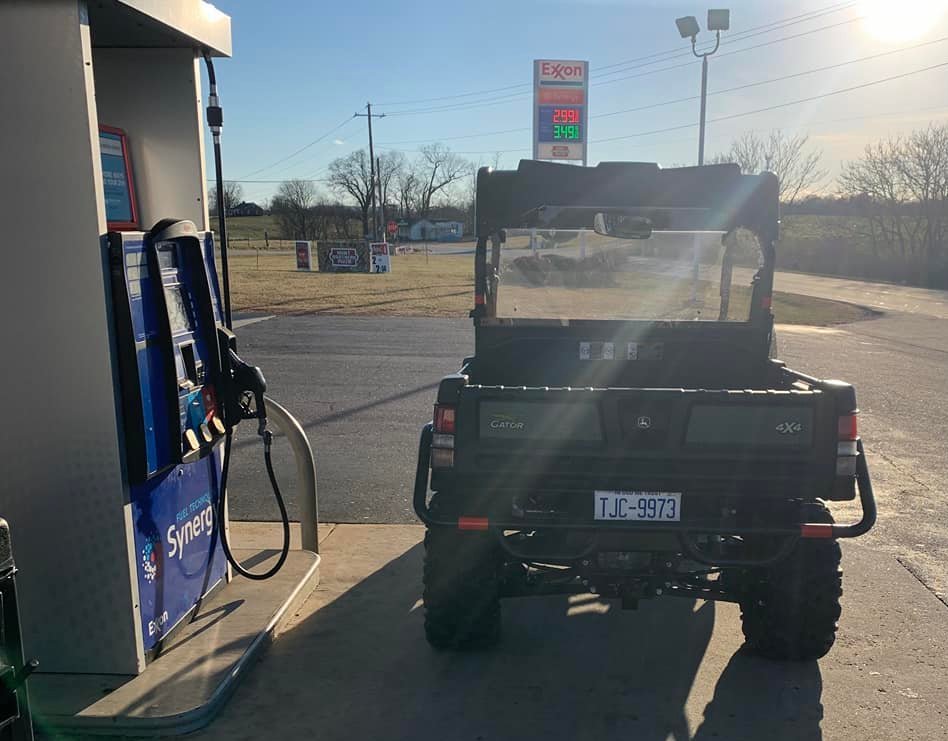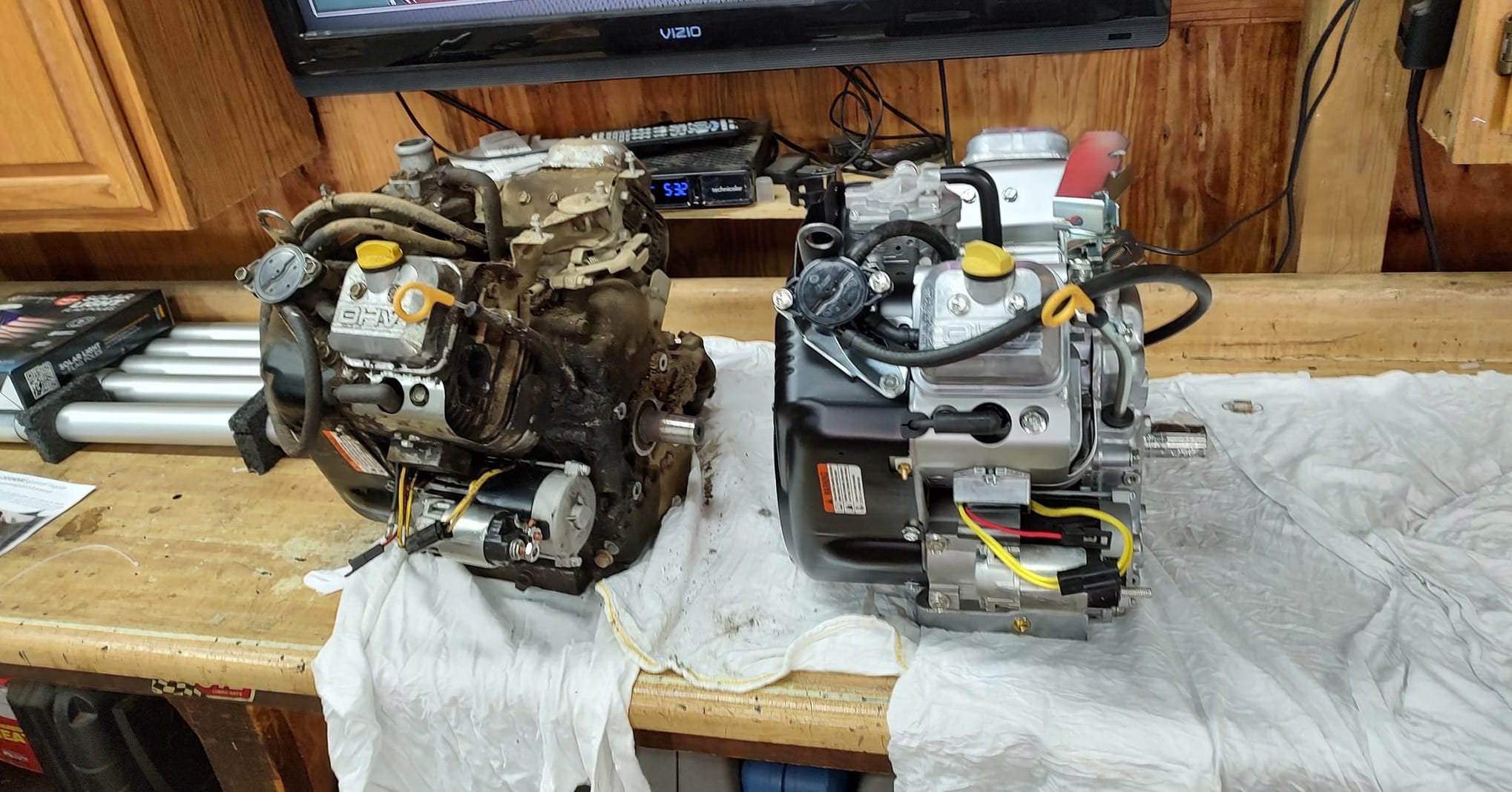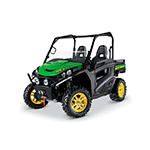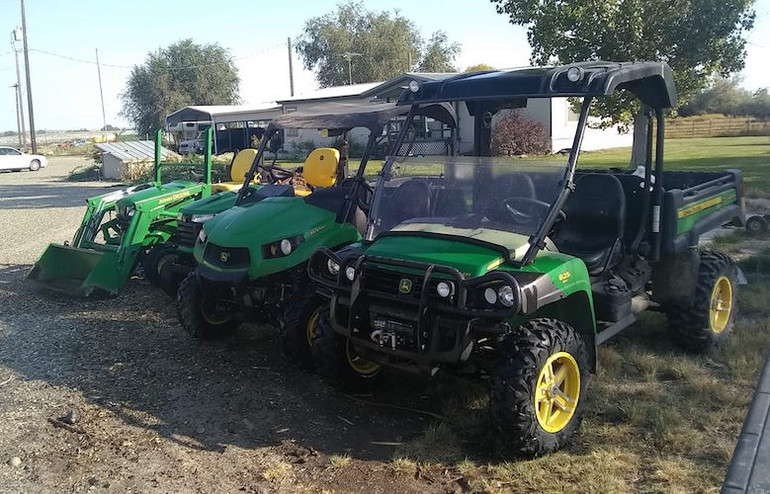10 Most Common Questions About The John Deere Gator
Apr 16th 2023
Question 1: Is the John Deere Gator a UTV?
Answer 1: Yes, the John Deere Gator is a UTV (Utility Task Vehicle).
Question 2: Where is the battery on a John Deere Gator?
Answer 2: The location of the battery in your John Deere Gator will vary depending on the vehicle’s year, model, and edition.
On the John Deere Gator 865, 835, 825, and 855, the battery is positioned near the bottom of the vehicle on the passenger side behind a panel and below the air filter. The battery on a John Deere Gator HPX is located under the passenger seat, and the battery on a John Deere Gator RSX is also mounted below the seat on the passenger side of the machine. On some Gator years / models, the battery may be located under the steering column.
Question 3: Is the John Deere Gator street legal?

Answer 3: While the John Deere Gator is not road-ready from the factory, it can be driven legally on public roads provided that you’ve installed the mandatory John Deere Gator street legal accessories.
Question 4: Are John Deere Gators any good, and are they reliable?
Answer 4: They’re not the fastest machines out there, but the John Deere Gator lineup of work-series and crossover-series UTVs are extremely reliable – provided that you use them appropriately for what they’re designed to do. The John Deere Gator 835, for example, is not made for deep water – Deere recommends six inches maximum – and its intended use is as a work vehicle. The John Deere Gator RSX, on the other hand, is more of a toy than a workhorse.
That being said, with the right aftermarket tires, the Gator XUV will do amazingly well in all kinds of conditions... including mud. The ride quality in an 835 Gator is above average and smooth as silk, and it also has a sharp turning radius with an adequate amount of power – although nowhere near the same HP as a Razor or other sport-style side-by-side.
There are a small number of grease fittings on many John Deere Gator editions, which means that you’ll be replacing ball joints more often than you otherwise would. On John Deere Gator cab models, the interior room is excellent, and the heating / air conditioning are well worth it – but the HVAC system could stand to have a slower fan speed. Many John Deere Gators also come with a power bed lift, which makes quick work out of many hauling / transport tasks.
The R models of the John Deere Gator 835 are pre-wired for most accessories, but the receiver hitch it comes with is virtually useless without an extension tube to get the hitch attachment further out from underneath the chassis.
Compared to Kubota RTVs and Kawasaki Mules, the John Deere Gator (and the 825 in particular) blows the competition out of the water. Not only does it hold up to daily work far better than anything else, but the Gator is also a beast that’ll accomplish anything you point it towards. Nevertheless, you might experience problems with the belt, so it’s good to replace it about every 600 hours or so. The 40 amp fuse in the fuse block under the hood is also known to melt, but this is an easy fix with a PIP kit.
Some riders have noted that the reliability / durability went down a hair on the 835 and 865 models, but no matter what the vehicle, everything will eventually break down sooner or later. The good part about having a John Deere Gator, though, is that getting parts / service is far easier than with other manufacturers. Whether you want a thoroughbred like the RSX that wants to run and run, or a draft horse like the XUV 825 / 835 that’s a brute of a farmhand, if you choose the right John Deere Gator for the application at hand, you won’t have to worry about poor reliability, inferior performance, or a lack functionality!
Question 5: Who makes the John Deere Gator?
Answer 5: John Deere Gator side-by-sides are designed and built in Horicon Wisconsin by the John Deere Corporation.
Question 6: Are John Deere Gator keys universal?
Answer 6: The cut ends of John Deere Gator keys have remained basically unchanged since the vehicle first came out, and for the most part, they are universal. John Deere has only a few keys for all their machines, so you might be able to start your Gator with one of John Deere's zero-turn mower keys, a pay loader key, or even a combine / tractor key. This comes in handy if you have multiple JD machines, but it makes the Gator an easy target for thieves.
Question 7: What engine is in a John Deere Gator?

Answer 7: While John Deere lawn tractors use engines made by Kawasaki and Briggs & Stratton, most gas-powered John Deere Gator XUVs are equipped with Chery engines made by the state-owned Chinese firm Chery Automobile Co. Ltd, and most Diesel John Deere Gators use Japanese-made Yanmar engines. In the John Deere Gator 625, TX, and TS models, though, Deere uses engines made by Kawasaki.
Question 8: Are John Deere Gators belt driven?
Answer 8: Yes, the CVT transmission in a John Deere Gators employs a drive belt.
Question 9: What is the fastest John Deere Gator model, and how fast can it go?
Answer 9: The fastest vehicle in the John Deere Gator family is the RSX 860i, which can hit speeds of roughly 60 MPH in its stock configuration. To learn more, follow this link to another post we wrote about the top speed of a John Deere Gator and how to increase it!
Question 10: Are John Deere Gators gas or diesel?
Answer 10: John Deere Gators come in both gas and diesel versions, but most of their vehicles use gas-powered engines.




